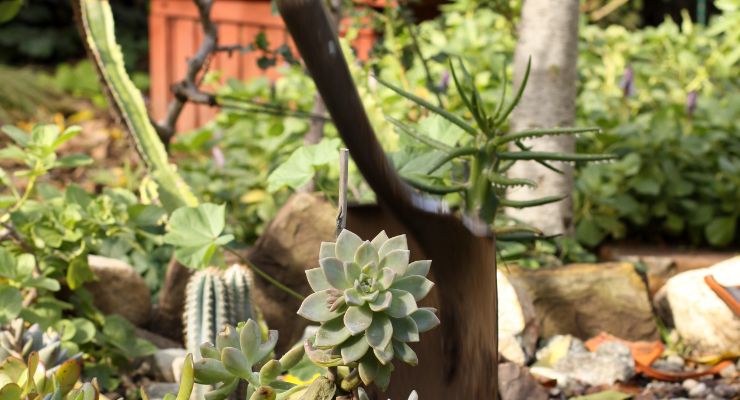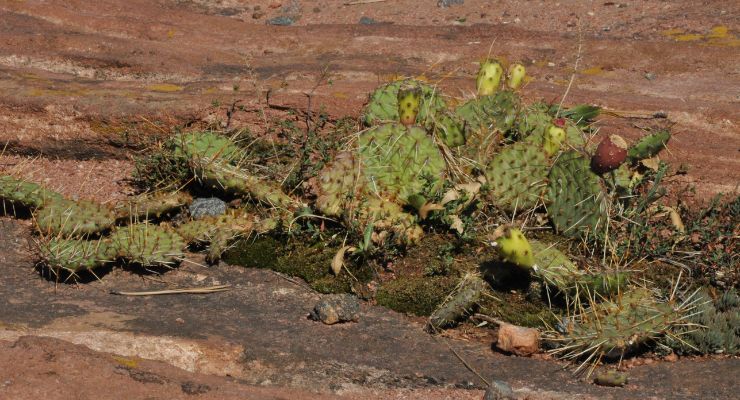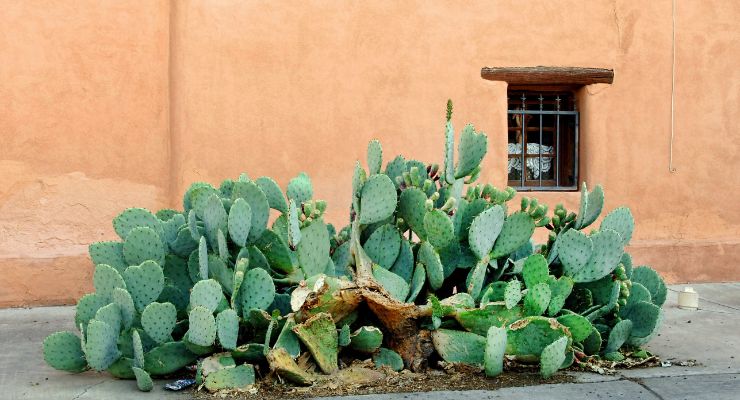Cacti are fascinating and unique plants that have evolved to survive in harsh desert environments. However, despite their beauty and resilience, cacti can sometimes become a nuisance when they invade residential or commercial properties, obstructing pathways and causing damage to buildings and infrastructure.
Removing cacti can be a challenging task, as these plants are equipped with sharp spines and can be difficult to uproot.
In this article, we will explore different methods on how to kill a cactus, including manual removal and chemical approaches, as well as tips for preventing their regrowth.
Whether you’re dealing with a single cactus or a whole patch, this guide will provide you with the necessary information to tackle the problem effectively and safely.
Assess the situation
Before attempting to get rid of a cactus plant, it is important to assess the situation to determine the best approach for the task. There are several key factors to consider when evaluating whether to kill cacti.
It is important to identify the species of cactus and its growth habits. Different cacti have different root systems, spines, and growth patterns, which can impact the difficulty of removal and the best removal method to use.
Some cacti have shallow roots that can be easily pulled up, while others have deeper roots that require more effort to remove. Understanding the specific species of cactus can also help to identify any potential hazards, such as poisonous spines or other toxins.
The size of the cactus and its location should be assessed. Larger cacti may require heavy equipment or professional assistance to remove, while smaller cacti can often be removed manually. The location of the cactus plants is also important to consider, as those located near buildings, power lines, or other structures may pose a safety hazard during removal.
Any safety hazards or property damage caused by the cactus should be identified. Cacti with large or heavy limbs may pose a risk of falling and causing injury or damage to property. Cacti with spines or other hazards should be approached with caution to avoid injury.
By thoroughly assessing the situation before attempting to kill the cactus plant, you can ensure that the task is completed safely and effectively. Consider consulting with a professional if you are unsure about the best approach to take.
Determine the best course of action
Before killing a cactus plant, it’s important to assess the situation by considering the local regulations, the necessity of removal, and the potential need for professional help.
Local regulations and laws may restrict the removal of some cacti species or require the use of specific removal methods. Relocation may be an alternative option to consider instead of complete removal, as it can preserve the plant and its benefits to wildlife.
The decision to kill cactus plants on your own or to hire professional help depends on the complexity and size of the task. While small cacti may be removed manually, large cacti and complex removals are best left to professionals to ensure safety and effectiveness.

Kill Cactus Plants Manually
Removing a cactus manually is a feasible option for baby cacti plants or medium-sized cacti. When removing a cactus manually, it’s important to wear protective clothing and thick gloves to avoid injury from the cactus needles.
To begin the removal process, use a shovel or pickaxe to dig around the base of the cactus. This will loosen the soil around the roots and make it easier to remove the plant. Once the soil is loosened, use pruning shears to cut the cactus near the ground level.
After the cactus has been cut, use a winch or tractor to remove the root ball, if necessary. This will help to ensure that the entire plant is removed, preventing regrowth.
Once the cactus and its roots have been removed, it’s important to dispose of them properly. In some areas, it may be illegal to dispose of cacti in regular trash or green waste bins due to the risk of spreading invasive species. Check with local regulations for proper disposal options.
Kill Cactus with Herbicides
Types of Herbicides that Kill Cactus Plants
There are several herbicides that can be used to kill cacti, each with its own effectiveness, application method, and potential risks. Here are some common herbicides used to kill cacti:
Picloram
Picloram is a systemic herbicide spray that is absorbed by the plant and transported throughout the entire plant, including the roots. It kills cactus plants effectively and can prevent regrowth for several years. However, it has a long persistence in the soil and can also harm non-target plants.
2,4-DP
2,4-DP is a selective herbicide that targets broadleaf plants, including cacti, like Prickly Pear Cactus or Cholla Cactus. It works by disrupting the plant’s growth hormone system and causing abnormal growth. It is less persistent in the soil than picloram but can still have negative effects on non-target plants.
Fluroxypyr
Fluroxypyr is a selective herbicide that works by disrupting the plant’s growth hormone system, similar to 2,4-DP. It is effective against some cactus species but may require multiple applications.
Hexazinone
Hexazinone is a non-selective herbicide that can kill both grasses and broadleaf plants, including cacti. It works by inhibiting photosynthesis and can have long-term effects on the soil.
It’s important to note that herbicides can have negative impacts on the environment and human health if not used properly. Always read the label instructions and follow the recommended application rates, and consider using non-chemical methods of cactus removal whenever possible.

Process for killing the cactus with Herbicides
Removing cactus with herbicides can be an effective and efficient method for controlling cactus populations. However, it is important to take proper precautions to ensure safe and effective application. Here are some tips for removing cactus with herbicides:
Herbicides can be dangerous if they come into contact with skin, eyes, or clothing. It is important to wear protective clothing, including long sleeves, pants, gloves, and eye protection, to prevent exposure.
Herbicides can drift and cause unintended damage to non-target plants or animals. It is important to choose a calm, windless day for herbicide application to prevent drift on nearby plants and ensure that the herbicide is applied only to the target plant.
Herbicides come in different strengths and formulations, and it is important to mix them according to the manufacturer’s instructions for optimal efficacy and safety.
Herbicides can be applied directly to the root system of cactus or the cut surface of the cactus for optimal absorption. It is important to follow label instructions and avoid over-spraying to prevent herbicide drift and unintended damage to non-target plants or animals.
Removing cactus with herbicides can be an effective method for controlling cactus populations when used properly and according to label instructions. However, it is important to consider alternative methods of control and consult with a professional or local extension service before using herbicides.
Dispose of the cactus responsibly
Proper disposal of cactus treated with herbicides is important to prevent harm to the environment and ensure public safety. After removing cactus with herbicides, it is important to dispose of it responsibly. Here are some tips for disposing of cactus treated with herbicides:
Different regions may have different regulations for the disposal of plants treated with herbicides. Cactus treated with herbicides can be harmful to other wildlife or plants if not disposed of properly. Do not simply discard it in the environment or compost it. Instead, follow the recommended disposal method provided by local waste management authorities.
Disposing of cacti treated with herbicides responsibly is important for public safety and environmental protection. It is important to follow local regulations.

Prevent future growth
Preventing future growth of cactus after removal is important to avoid the need for repeated removal and potential harm to the environment. Here are some tips for preventing future growth:
After removing a cactus, it is important to remove any remaining root pieces to prevent regrowth. Even small root pieces can lead to regrowth, so it is important to be thorough in removal.
To prevent future growth of cactus, consider replacing the area with a more suitable plant species or using landscaping practices to prevent cactus growth. For example, you could plant native grasses or wildflowers that are better suited to the area or use gravel or mulch to prevent cactus growth.
Conclusion on
Killing a cactus can be a necessary step for safety reasons, due to fungal infections, damaged or unhealthy cacti, or to prevent property damage. There are two main methods to kill a cactus: manually and with herbicides.
When manually removing a cactus, it’s important to assess the situation, determine the best course of action, remove the cactus safely, and dispose of it responsibly.
When using herbicides, it’s important to wear protective clothing, choose a calm day, mix the herbicide according to the instructions on the spray bottle, and apply it directly to the cactus or the cut surface.
After killing a cactus, it’s important to prevent future growth by removing any remaining root pieces and considering more suitable plant species or landscaping practices. Following these steps, you can effectively and safely kill cactus.

